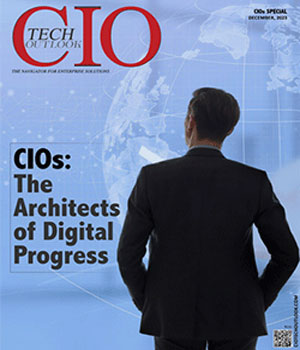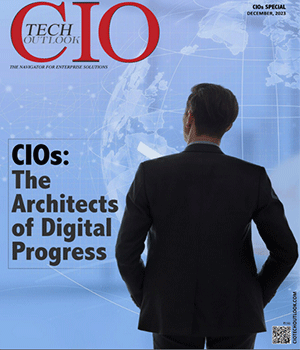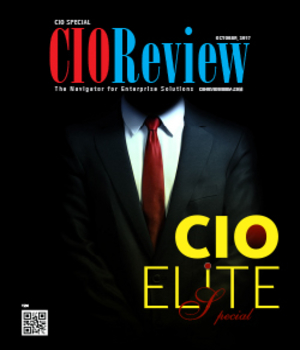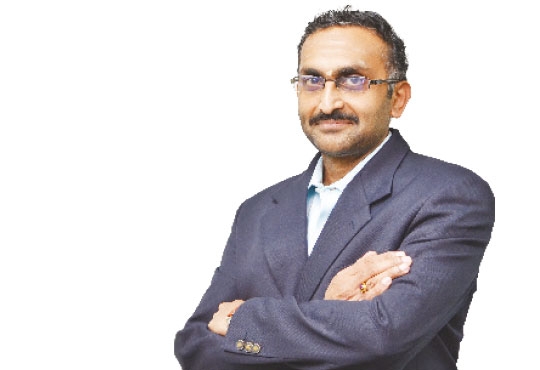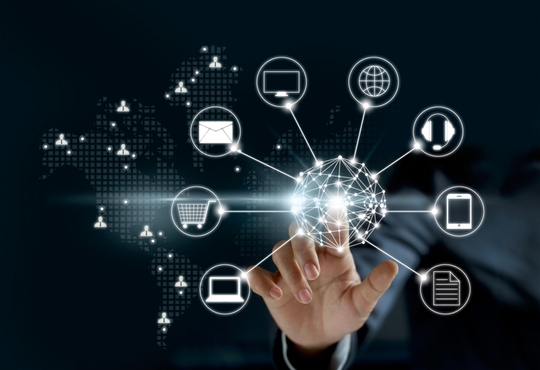
AT the Intersection Of Digitalization and Automobiles
Sirish Batchu, Head - Infotronics Technology & Advance Electronics, Mahindra Group | Friday, 06 October 2017, 06:10 IST
 Digitalization has changed the very way the businesses are run today. Every other industry is impacted by Digitalization like Banking, Healthcare, Manufacturing, Retail, E-Commerce, etc.
Digitalization has changed the very way the businesses are run today. Every other industry is impacted by Digitalization like Banking, Healthcare, Manufacturing, Retail, E-Commerce, etc.
The Automotive Industry that has traditionally been more of muscle and machine is also veering towards offering more sophisticated user experiences, drive and comfort. Digitalization is playing a very important role in the Automotive industry not only through the adoption of Industry 4.0 practices in manufacturing, but also transforming the in-vehicle experiences. The rest of my discussion will focus more on the transformation that is taking place in and around the vehicles through the Digital Technologies, primarily from the perspective of an Automotive OEM.
The Evolution of the Automobile
Ever since the invention of the wheel has transformed the mobility for the human race in the ancient ages, it took centuries for the motorization of the wheel which can be considered as the next big revolution in mobility. The evolution in the propulsion technologies have moved through steam power to fossil fuels. We have been witnessing the quest for more efficient and sustainable alternate fuels like hydrogen, compressed gas, hybrids and recently electric powered mobility. One of the major catalyst towards making the engines more efficient has been the introduction of the Electronic Control Units (ECUs) towards optimum control of the fuel injection and other performance and safety related aspects of the vehicle (e.g. ABS, Airbags, etc.) The development curve of mobility has seen an exponential rise in terms of the number of electronic components and sensors in the vehicles driven by software controlled algorithms over the last two decades. Automobiles (including cars, trucks & even tractors) are having several ECUs and they have their own network to communicate each other. With the amount of electronics and software driven features infused in the vehicles, they are rightly called computer on wheels.
"The evolution in the propulsion technologies have moved through steam power to fossil fuels"
People end up spending a majority of their time in the automobile owing to long commutes, which can be attributed as the third highest time that one spends on average after the home and work. Our lifestyles are totally influenced by the smartphones and many of these “Digital” experiences are also converging into the Automotive. The first steps towards embracing the Digital realm in the Automotive started with the integration of the mobile phones with the In-Vehicle-Infotainment (IVI) systems to provide hands-free telephony and accessing Digital content (music, videos, etc.).
Efficiency that has always been a huge concern in the commercial vehicles space, has been largely helped through the introduction of Telematics. It has come as a boon in this space by bringing in transparency, efficiency & safety to the fleet, enabled by the combination of in-vehicle information with the telecommunication and internet. Telematics in the automobiles enable live vehicle tracking, GPS based route planning and geo fencing, offering full control over the fleet. Fuel and health status of the automobile is available anywhere through the digital interfaces. Historical data and dashboards help improve the productivity of the fleets in turn benefitting both the drivers and owners of the vehicles.
The focus is now shifting to smart mobility by utilizing the in-vehicle data in tandem with the environmental data towards intelligent decision making for realizing better mobility solutions. The data available from the vehicles open up host of opportunities for VRM (Vehicle Relationship Management) towards remotely monitoring the vehicle health, diagnostics, preventive maintenance etc. Today cars can not only talk to its user but also the environment and other vehicles around it for safer and efficient mobility.
The Mercedes, BMWs, General Motors and other global giants are making huge investments in Digitalization and creating offerings in the different vehicle segments by blending the in-vehicle electronics and IT worlds, not only limited to the in-vehicle features/experiences but also linking up the entire value-chain in terms of the end-2- end Business process integration, thereby bringing in a higher level of customer centricity or CRM.
The Indian OEMs too are not far behind on this curve the massive shift towards Digitalization is starting with the introduction of Connected Vehicle solutions.
Digitalization is now shaping the end-2-end experience through a higher integration of the automobiles with the Service, Spare Parts Management, Marketing and other relevant OEMs business and Engineering functions.
What the Future holds…
Looking into future, easy & cheap access to Machine Learning & AI platforms connected to cloud is supporting mobility like any other technology driven industry. Examples like Google cloud services, AWS, IBM Watson, Microsoft Azure are the combinations of cloud, ML & AI. Mobile technologies like Google’s Android Auto & Apple’s Car Play are going to give the car owners a seamless integration between mobility & their digital life.
The ultimate digital or technological paradigm would be driverless & autonomous cars. Enabled with sensors like LIDAR, video cameras, ultrasonic sensors, accelerometers, GPS & advanced processors on the hardware front, Machine learning, Deep learning & Artificial Intelligence will drive the real-time decision making through the software. Since a lot of researchers & companies have already proven the concept, the spell for autonomous mobility is not far away. The major challenge would be the incorporation of autonomous concepts in parallel with the conventional drivers & the road infrastructure and live traffic scenarios and evolving an acceptable regulatory framework to support all this. To predict a potential accident or the risk & mitigating it by itself autonomously is the future of safety in mobility. The industry will also shift from fossil fuels to electric powered vehicles and this would be riding on the back of the digital inclusion in the auto industry towards better charging stations, routes, etc.
The evolution of digital-social ecosystem would also change the patterns of car ownership and usage in future. People would own cars based on the occasion & use case. Users could rent a SUV for a long road trip during vacations or weekends & a small car for the city drive/daily commute. Ride sharing & shared car service would find new business models. Automotive industry economics would change with the digitalization. Car companies could be evaluated by the kilometers covered rather than the number of cars sold.
Having mentioned all this transformational experiences, there would be tremendous focus on security. Vulnerability of mobility could be much more fatal than any other industry. Automotive Cyber Security is one of the evolving challenges. Since vehicles will be open to the internet, WIFI, Bluetooth etc., chance of hacking cars is high. We have seen vulnerability examples across globe by the security scientists. Recent worldwide unprecedented cyber-attacks like ‘WannaCry’ are enforcing cyber security need of the hour. Development of secure hardware & software will be a necessity or thrust area for future digital mobility.
What we are seeing around today is just a scratch on the surface of a larger possibility. The infinite opportunities would be encased by many players inside & outside mobility industry. New user experiences would be available around mobility & surrounding economy. Innovative business models would evolve leveraging the digital mobility eco system. Wide range social &digital inclusion would be propelled by the digitalization in mobility. Car utilization & ownerships patterns would feel disruption. Better products, differentiated services & fresh experiences would be the tomorrow of digital mobility. The future of the automotive industry will not be driven by the Automakers alone, but will be shaped through a strong collaboration with the IT Industry. The Automotive Industry is poised at a very interesting cusp of the technological shifts and will transcend from the linear economy through a circular economy towards a shared economy.
CIO Viewpoint
Hyper-Converged Infrastructure: The Next Big...
By Amit Jaokar, EVP - IT, Choice International
Embracing Technology: Need of the Hour in BFSI
By Nikhil Bandi, SVP & CIO, Vistaar Financial Services
Three Pronged Approach For Digitization In Life...
By Ekhlaque Bari, EVP & Head Technology - Max Life Insurance
CXO Insights
A Glimpse of A Changed AI Perspective in India
By Dr. Vijay Srinivas Agneeswaran, Senior Director of Technology, Sapient
Social Networking and the Enterprise
By Arindam Sen, SVP, Schneider Electric
Digital Transformation - Darwinism Or Dwarfism?


